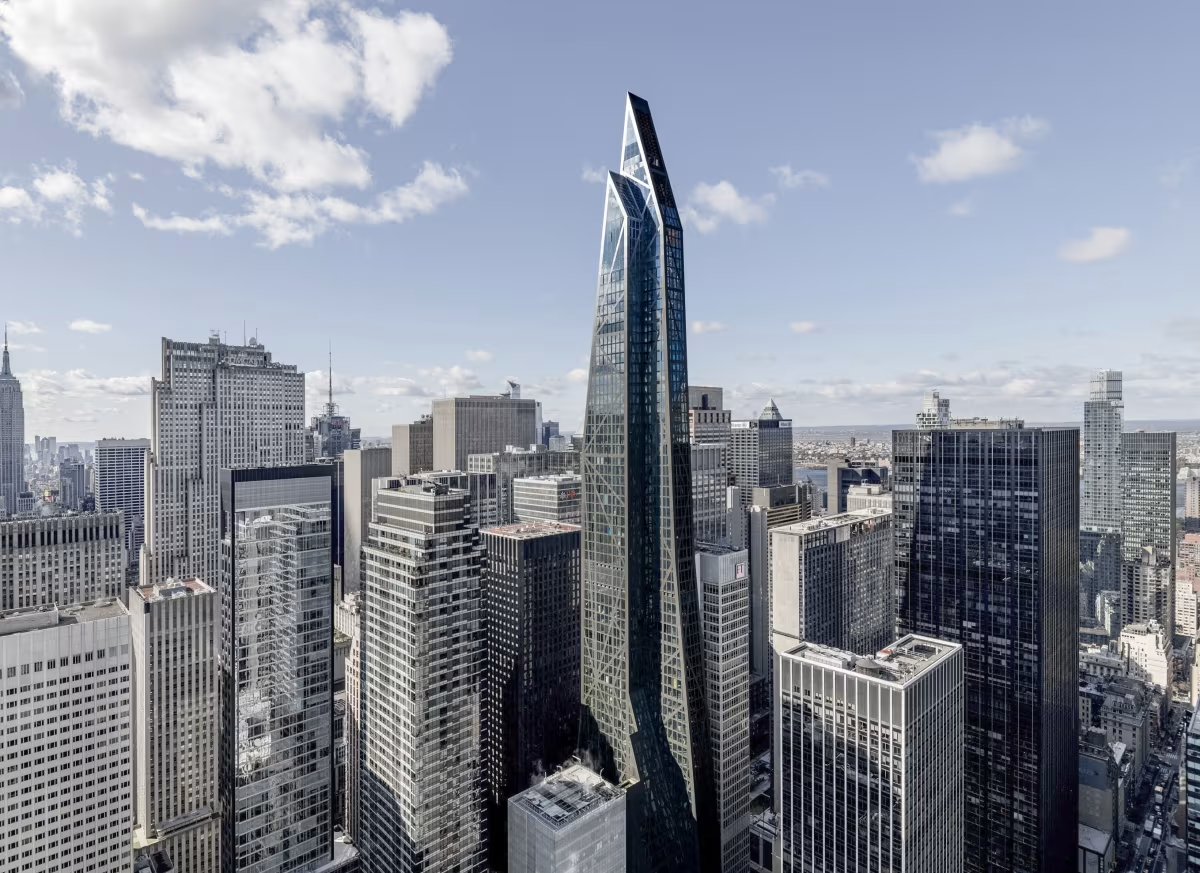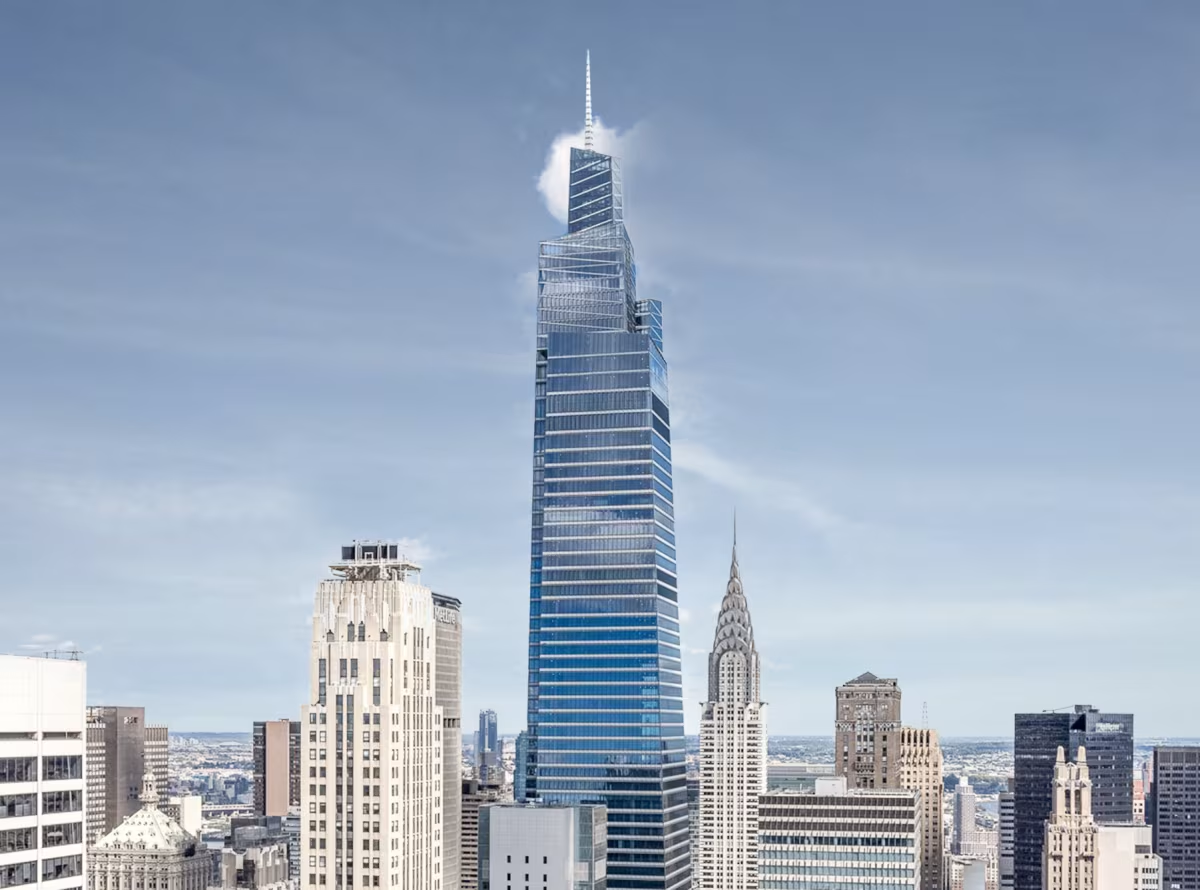53W53 Building vs One Vanderbilt


Comparing the 53W53 Building and the One Vanderbilt is interesting because they both stand in New York, NY, and were completed just one year apart, but they were designed by different architects.
This offers a unique glimpse at how rival designers approached projects in the same city during the same era.
Height & Size
These two towers present an interesting contrast in their proportions. The One Vanderbilt rises higher at 1401ft (427m), while the 53W53 Building reaches 1050ft (320m). However, the 53W53 Building accommodates more floors with 77 levels above ground, compared to 67 floors in the One Vanderbilt.
This suggests different approaches to interior space design. The One Vanderbilt has an average floor-to-floor height of approximately 6.4m, while the 53W53 Building has more compact floors averaging around 4.2m each. The taller building's more generous floor heights might indicate grander interior spaces, higher ceilings, or different programmatic requirements.
These different proportions likely reflect the specific needs each building was designed to serve, whether driven by zoning regulations, client requirements, or the intended use of the spaces within. The contrast shows how architects can achieve different spatial experiences even when working with similar overall building scales.
Architectural Style
Both the 53W53 Building and the One Vanderbilt were designed in line with the aesthetic conventions of the Contemporary style.
At the time, this style was at the height of its popularity. So both Jean Nouvel and Kohn Pedersen Fox Associates followed what was in many ways expected of them, producing designs that fit comfortably within contemporary architectural norms, rather than breaking with convention.
Uses
The 53W53 Building follows a mixed-use model, combining residential, hotel and cultural. In contrast, the One Vanderbilt has remained primarily commercial.
The 53W53 Building offers 145 residential units.
Structure & Facade
Both the 53W53 Building and the One Vanderbilt rely on a Trussed Frame structural system.
A trussed-frame system adds diagonal bracing to a traditional frame, creating triangulated elements that improve resistance against wind and seismic forces.
They also employ the same type of facade, a Curtain Wall facade.
A curtain wall is a non-load-bearing facade hung from the structural frame. It is anchored to floor slabs and transfers only its own weight and wind loads, allowing for sleek, glassy exteriors.
| 53W53 Building | One Vanderbilt | |
|---|---|---|
| Jean Nouvel | Architect | Kohn Pedersen Fox Associates |
| 2006 | Design Started | 2013 |
| 2009 | Design Ended | 2016 |
| 2015 | Construction Started | 2017 |
| 2019 | Year Completed | 2020 |
| Contemporary | Architectural Style | Contemporary |
| Mixed | Current Use | Commercial |
| 77 | Floors Above Ground | 67 |
| 2 | Floors Below Ground | 4 |
| 271 | Last Floor Height | 330 |
| 320 m | Height (m) | 427 m |
| 320 | Tip Height | 427 |
| 57,000 m² | Usable Area (m²) | 162,600 m² |
| Trussed Frame | Structure Type | Trussed Frame |
| Concrete | Vertical Structure Material | Steel |
| Reinforced Concrete | Horizontal Structure Material | Poured Concrete Over Metal Decking |
| Yes | Facade Structural? | No |
| Glass, Steel, Aluminum | Main Facade Material | Aluminium, Glass, Terracotta |
| Lendlease Corporation | Main Contractor | AECOM Tishman Construction |
| WSP Flack + Kurtz | MEP Engineer | Jaros Baum & Bolles |
| WSP Cantor Seinuk | Structural Engineer | Severud Associates Consulting Engineers |
| Israel Berger & Associates | Facade Consultant | Vidaris |
| Thierry Despont | Interior Designer | Gensler |
| NY | State | NY |
| New York | City | New York |
| 53 West 53rd Street | Address | 1 Vanderbilt Avenue |